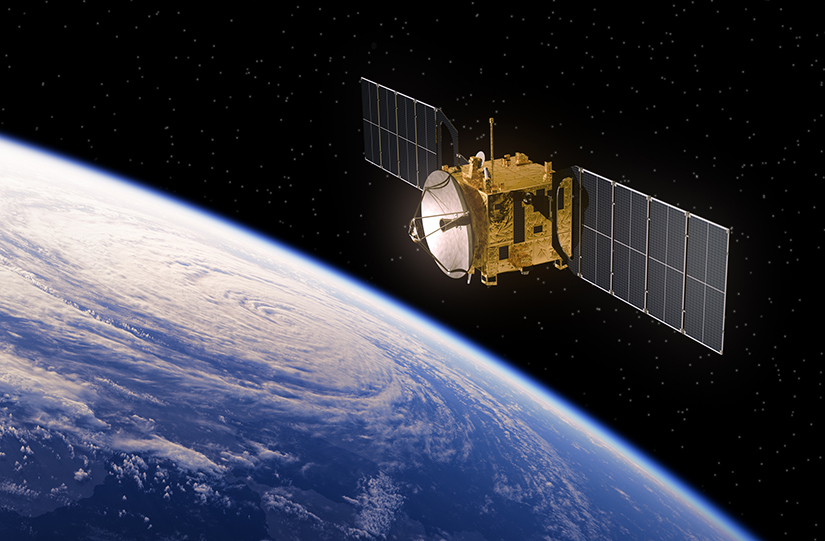“Golden Dome for America”[1] is a cross-border, next-generation missile defense concept announced by US President Trump to protect the US mainland.[2] It essentially extends beyond traditional ballistic missile defense (BMD) with the aim to counter emerging airborne threats[3] such as hypersonic glide vehicles (HGVs), cruise missiles, AI-equipped drone swarms numbering in the hundreds[4]—reflecting the diversifying and increasingly complex nature of these aerial threats as part of an Integrated Air and Missile Defense (IAMD) system.
At the core of this system lies a so-called“System of Systems”[5], which organically integrates technology-intensive, independent detection and tracking sensors, interceptor systems, and command and control networks. Realizing such a system would require national-level efforts comparable to the Apollo program[6], which successfully sent humans to the moon in the 1960s. As airborne threats continue to grow in complexity and accelerate across Asia[7], Japan now faces the critical challenge of aligning its IAMD policy with the United States’new homeland defense initiatives.

Transforming Airborne Threats
Recent airborne threats have undergone remarkable evolution in terms of speed, trajectory, and launch characteristics. In particular, China and Russia’s hypersonic weapons and Fractional Orbital Bombardment System (FOBS)[8] are feared to surpass the design capabilities of existing Ballistic Missile Defense (BMD) systems, potentially rendering their air defense shields ineffective. On the other hand, in 2024, Iran launched a saturation attack[9] involving hundreds of missiles against Israel. Israel successfully responded using a multi-layered air defense system that included the low-altitude missile defense system“Iron Dome,”[10] which once again highlighted the importance of missile defense systems capable of comprehensively protecting the homeland from increasingly diverse and complex airborne threats[11].
In addition to its existing BMD assets[12], the United States is developing a detection and tracking system using space-based hypersonic sensors (Hypersonic and Ballistic Tracking Space Sensor: HBTSS)[13] and satellite constellations[14] (Proliferated Warfighter Space Architecture: PWSA)[15], while also planning to upgrade its Ground-based Midcourse Defense (GMD) through the introduction of Glide Phase Interceptors (GPI). The integration of these existing and under-development defense systems into a unified system aims to achieve an autonomous air defense shield capable of intercepting ballistic missiles and other threats at all stages: immediately after launch (boost phase), during inertial flight outside the atmosphere (midcourse phase), and after re-entry into the atmosphere (terminal phase)[16].
Expectations and Concerns
Promoting the Golden Dome Initiative will enable effective responses to hypersonic weapons and complex saturation attacks that were difficult to counter with conventional missile defense systems, thus improving mainland defense capabilities. On the other hand, some experts argue that lessons should be drawn from the history of the Strategic Defense Initiative (SDI), also known as the “Star Wars program,” proposed by President Reagan but never realized due to various reasons[17]. In particular, it is anticipated that the development and deployment of numerous interceptor systems in low Earth orbit(LEO) will be necessary to intercept ICBMs immediately after launch, and that the construction of a large-scale tracking sensor network will be required to manage intercept operations[18]. Consequently, concerns are growing over the enormous costs associated with these efforts[19].
On the other hand, there is also optimism that integrating cutting-edge fields such as space technology, AI, and quantum communication will accelerate technological innovation in the United States, enhance the superiority of U.S. military power[20], and yield spillover benefits in the civilian sector. This expectation mirrors the legacy of the Apollo program, which spurred advancements in civilian technology. At the system level, the integration of systems requires not only extremely advanced technology and IT infrastructure, but also cross-organizational, functional, and domain-level coordination capabilities to integrate various air defense-related systems—capabilities that include space-based interception, real-time information sharing, and AI-driven command and control[21].
Additionally, the deployment of the Golden Dome could also inadvertently encourage the proliferation of weapons of mass destruction by undermining the reliability of existing airborne threats and increasing the cost-effectiveness challenges for potential attackers[22]. As a result, the United States would need to intensify efforts toward arms control and disarmament concurrent with the development of this system. In this context, this approach reflects lessons drawn from the Reagan era, during which the simultaneous pursuit of missile defense under the SDI and the development of new ICBMs (MX) and single-warhead small ICBMs ultimately contributed to the negotiation of major arms control agreements, including the Intermediate-Range Nuclear Forces Treaty (INF) and the Strategic Arms Reduction Treaty (START)[23]. Building on this precedent, the Trump administration appears to seek not only the development and deployment of the Golden Dome but also the resumption of stalled multilateral arms reduction talks[24] aimed at advancing strategic arms control and limiting nuclear weapons[25].

Japan’s Response to the Golden Dome Initiative
While the details of the Golden Dome initiative have not yet been officially disclosed, cross-agency discussions and coordination toward its concrete implementation have already begun under the leadership of the U.S. Department of Defense, involving relevant government agencies and defense commercial firms[26]. As it becomes a priority for the Trump administration, efforts to accelerate the development and deployment of key components of the Golden Dome—such as the initiative’s multi-purpose satellite constellations[27] and the Joint All-Domain Command & Control (JADC2) military network system—are expected to advance the early realization of the Golden Dome[28]. In this context, how should Japan, a key U.S. ally, respond?
・Strengthening Cooperation in Space
To protect the lives and property of its citizens from the growing airborne threats in East Asia, Japan should initiate discussions on developing an IAMD system in coordination with the United States, which is advancing the Golden Dome Initiative. Given that the core of the Golden Dome consists of detection and tracking sensors and interceptor systems deployed in space, this presents an opportunity for the reassessment of the interoperability of U.S.-Japan space assets in countering global airborne threats. Furthermore, cooperation between the U.S. Space Force—poised to play a central role in the Golden Dome—and the Japanese Self-Defense Forces should be strengthened[29].
・Evolution of Joint Development and Technological Cooperation
The Golden Dome Initiative aims to be realized in stages by the 2030s, necessitating the urgent adoption of Evolutionary Acquisition and Spiral Development (EA/SD)[30] for its phased deployment. In this context, Japan and the United States—longtime partners in co-developing missile defense systems[31] such as the SM-3 Block IIA—are currently collaborating on the development of a Glide Phase Interceptor (GPI) designed to engage hypersonic missiles before atmospheric reentry, as part of efforts to develop next-generation missile defense systems. Moving forward, Japan’s aerospace and defense industries could cooperatively contribute to the initiative by developing equipment and software for the Golden Dome[32]. The presidential directive on the Golden Dome explicitly emphasizes the need to strengthen collaboration with allies and partners across development, capability enhancement, and operations[33].
・International Cooperation in Defense Industry
Cooperation in the development of the Golden Dome—an integrated system of systems—is expected to foster collaboration among industry, academia, and government, including the Acquisition, Technology and Logistics Agency (ATLA), JAXA, and the private commercial sector. This could stimulate domestic technological innovation and strengthen Japan’s indigenous defense industrial base.
Given that NATO also regards IAMD as an urgent priority[34], and in light of the growing trend toward joint development and procurement of advanced dual-use technologies[35], opportunities for trilateral industrial collaboration on IAMD-related capabilities—among Japan, the US, and NATO should be explored.
In Closing
As airborne threats become increasingly diverse and complex globally, Japan must place greater emphasis on strengthening IAMD cooperation and coordination with partner countries, anchored by the Japan-U.S. alliance. For instance, Japan, the United States, and South Korea have established a mechanism for sharing early-warning alert data on North Korean ballistic missiles launches[i][36] and have conducted trilateral ballistic missile defense exercises[ii][37], suggesting that the foundation for multilateral IAMD cooperation is already taking shape.
Building upon current Japan-U.S. cooperation under the Golden Dome initiative, opportunities also exist to deepen collaboration with friendly partners such as the Philippines[38] and Taiwan[39], particularly in areas including threat monitoring and intelligence sharing related to airborne threats. Specifically, examples could include the multilateral sharing of sensor data such as satellite imagery and radar feeds related to IAMD, as well as joint military exercises within existing multilateral defense cooperation frameworks.
With the United States designating Golden Dome as a key policy priority, Japan—facing urgent needs to enhance its own IAMD capabilities—must clarify its strategic position on this plan[40], and articulate specific cooperative initiatives and a clear roadmap, and publicly express its commitment to meaningful cooperation.

(2025/05/19)
Notes
- 1 On January 27, 2025, an executive order was issued announcing the launch of the ‘Iron Dome for America’ plan, but it was later revealed on February 24 of the same year that the name had been changed to “Golden Dome for America. Sandra Erwin, “Golden Dome replaces Iron Dome: Pentagon renames missile defense initiative,” Space News, February 28, 2025.
- 2 The White House, “The Iron Dome for America,” January 27, 2025.
- 3 This refers to objects assessed as capable of attacking from any direction, speed, or altitude, ranging from small, low-speed, low-altitude Unmanned Aerial Systems (UAS) to all types of cruise missiles and ballistic missiles, including Hypersonic Glide Vehicle (HGV). NATO, “NATO Integrated Air and Missile Defence Policy,” February 13, 2025.
- 4 Noah Bressner, “Pentagon stares down ‘drone swarm’ threat,” AXIOS, March 15, 2024.
- 5 “System of Systems” is a system composed of multiple systems that function together. Each system is an independent and distinct system, managed and operated separately. The Apollo program is said to have required a budget exceeding 4% of the federal budget at one point, involving hundreds of thousands of people and contributions from over 20,000 companies and universities. Richard Hollingham, “Apollo: How Moon missions changed the modern world,” BBC, May 17,2023.
- 6 The Apollo program is said to have required a budget exceeding 4% of the federal budget at one point, involving hundreds of thousands of people and contributions from over 20,000 companies and universities. Richard Hollingham, “Apollo: How Moon missions changed the modern world,” BBC, May 17,2023.
- 7 Russia’s Sarmat ICBM, Avangard, Zircon hypersonic weapons, and the Burevestnik nuclear cruise missile, as well as China's DF-17 hypersonic weapon, are being developed to neutralize BMD systems. Rajeswari Pillai Rajagopalan, “Russia Tests Hypersonic Zircon Missile,” The Diplomat, July 22, 2021.
- 8 This refers to legacy attack technologies deployed by the former Soviet Union during the Cold War and reportedly dismantled under the 1979 SALT II Treaty. In October 2021, China conducted tests of an attack system combining FOBS and hypersonic glide vehicles (HGVs), aiming to circumvent U.S. BMD systems designed to counter ballistic missile attacks around the Arctic by utilizing part of the low Earth orbit (LEO, at an altitude of approximately 100–150 km), potentially enabling attacks from the Antarctic region. Colin Clark and Theresa Hitchens, “‘Global Strike From Space;’ Did Kendall Reveal Chinese Threat?” Breaking Defense, September 29, 2021. At the time, former U.S. Joint Chiefs of Staff Chairman Mark Milley described it as “very close to a Sputnik moment,” expressing a high level of concern over China’s hypersonic weapons utilizing space. Cameron Jenkins, “Milley: Chinese hypersonic weapons test very close to a ‘Sputnik moment’,” The Hill, October 27, 2021.
- 9 The April 13 attack involved the firing of around 120 short- and medium-range ballistic missiles, around 170 low-flying drones and around 30 cruise missiles towards Israel. Josef Federman and Jon Gambrell, “Israel says Iran launched more than 300 drones and missiles, 99% of which were intercepted,” AP news, April 14, 2024
- 10 Israel’s air defense system consists of the low-altitude “Iron Dome,” the mid-altitude “David’s Sling,” and the high-altitude “Arrow 2 and 3” systems, and is reported to have successfully intercepted 99% of the over 300 drones, ballistic missiles, and cruise missiles launched by Iran. Luis Martinez, “‘David’s Sling’ and ‘Arrow’ anti-missile systems: How Israel defeated Iran’s attack,” abc News, October 1, 2024.
- 11 Michael Knights, Elizabeth Dent, “Israel’s Missile Defense Performance: Views from the Gulf,” The Washington Institute for Near East Policy, October 11, 2024.
- 12 The Ground-based Midcourse Defense (GMD) system, the Sea-based Midcourse Defense (SMD) system, the Terminal High Altitude Area Defense (THAAD) missile for terminal phase defense, and the PAC-3 system.
- 13 The Missile Defense Agency (MDA) is developing a super hypersonic ballistic tracking space sensor that is expected to continuously monitor missile threats from launch to interception. U.S. Department of Defense, “MDA, SDA Announce Upcoming Launch of the Hypersonic and Ballistic Tracking Space Sensor and Tranche 0 Satellites,” February 14, 2024.
- 14 This refers to the cluster formation of miniaturized, multi-satellite systems, and the resulting increase in images and communication volume, as well as faster speeds, are expected to lead to a dramatic expansion of satellite data.
- 15 A military satellite network in low Earth orbit led by the Space Development Agency (SDA) for the purpose of detecting and tracking missiles on Earth. SDA, “SDA Layered Network of Military Satellites Now Known as ‘Proliferated Warfighter Space Architecture’,” January 23, 2023.
- 16 Peter Mitchell, “Golden Dome: Learning From the Past To Gild the Future,” RealClear, April 2, 2025.
- 17 Stavroula Pabst, “Saying the quiet part out loud: All that glitters is not 'Golden Dome',” Responsible Statecraft, March 28, 2025.
- 18 When considering the reliable destruction of enemy missiles during the boost phase, it is estimated that thousands of interceptor missiles would need to be deployed in low Earth orbit. Todd Harrison, “How Much Would a Space-Based Missile Interceptor System Cost and Does It Make Sense?” American Enterprise Institute, January 29, 2025.
- 19 Patrick Tucker,” Trump’s ‘Iron Dome for America’ plan would put weapons in space, at a big cost,” Nextgov, January 31, 2025.
- 20 U.S. military power is not only rooted in its physical capabilities but also in its ability to innovate and adapt to new threats. Taylor Hathorn, “Golden Dome: America’s Answer to the Hypersonic Threat,” Real Clear, April 3, 2025
- 21 Tim Guest, “Detecting Missile Threats from Space,” European Security & Defence, December 1, 2023.
- 22 Andreas Schmidt, “The Role of BMD in Deterrence?” The Journal of the JAPCC Edition 26, June 2018.
- 23 Daryl G. Kimball, “Looking Back : The Nuclear Arms Control Legacy of Ronald Reagan,” Arms Control Association, July 1, 2004.
- 24 Stephen J. Cimbala, Lawrence J. Korb, “Trump’s Iron Dome for America is ambitious. It also has some serious technology and policy flaws,” Bulletin of the Atomic Scientists, February 28, 2025.
- 25 During the first Trump administration, when the United States and Russia were negotiating the extension of the New Strategic Arms Reduction Treaty (New START), the United States and Russia sought to bring China into nuclear disarmament negotiations but failed. Against this backdrop, on February 13, 2025, President Trump expressed his intention to resume nuclear disarmament talks with Russia and China, stating that he hopes the three countries will ultimately agree to reduce their defense budgets by half. Andrea Shalal and Steve Holland, “Trump says he wants to work with Russia, China on limiting nuclear weapons,” Reuters, February 13, 2025.
- 26 Sandra Erwin, “Missile Defense Agency opens door to commercial firms for “Golden Dome” project,” Space News, April 6, 2025.
- 27 This refers to a state where small, numerous satellites form a cluster, resulting in the exponential expansion of satellite data due to increased image and communication volumes and faster speeds. See Note 14 for details.
- 28 Greg Hadley, “Golden Dome Is New. But Plenty of Next-Gen Missile Warning Is in the Works Already,” Air & Space Forces Magazine, April 10, 2025.
- 29 U.S. Space Command, “Space Symposium 40: Whiting stressed U.S. must prepare for conflict to ensure peace,” April 8, 2025.
- 30 Ronald O’Rourke, “Evolutionary Acquisition and Spiral Development in DOD Programs: Policy Issues for Congress,“ Congressional Research Service, December 11, 2006.
- 31 Felix Kim, “Japan, U.S. collaborating on hypersonic missile interceptor,” Indo-Pacific Defense Forum, September 29, 2023.
- 32 Based on the view that threats to Israel’s airspace could be eliminated through information sharing and defense asset support from allied and partner nations, it is anticipated that momentum will grow for joint development, technical cooperation, and collaboration with defense industries and startups in Japan. Alan W. Dowd, “Lessons from Iran’s attack on Israel,” American Legion, May 1, 2024.
- 33 Same as Note 2.
- 34 “New NATO programs focus on air, missile defense,” Sentry, April 2, 2025.
- 35 “Japan, NATO agree to ramp up defense industry cooperation,” Kyodo News, April 9, 2025.
- 36 U.S. Department of Defense, “United States-Japan-Republic of Korea Trilateral Ministerial Joint Press Statement,” December 19, 2023.
- 37 As early as July 2023, the United States, Japan, and South Korea conducted trilateral ballistic missile defense exercises. U.S. Forces Japan, “U.S., Japan, Republic of Korea Conduct Trilateral Ballistic Missile Defense Exercise,” July 16, 2023.
- 38 During the Balikatan joint military exercises between the United States and the Philippines, which will begin on April 21, 2025, in addition to the participation of the Australian military, the Self-Defense Forces will also participate as observers, and integrated air defense missile defense exercises for Philippine air defense are scheduled to take place. Michael Punongbayan,“US ‘ship killer’ missiles in Philippines for Balikatan,” Philippine Star Global, April 16, 2025.
- 39 Taiwan plans to introduce the National Advanced Surface-to-Air Missile System (NASAMS), which integrates multiple types of short- and medium-range air defense missiles and the Link 16 military tactical data link, with the aim of maintaining interoperability through open architecture. Further development is anticipated. Brandon J. Weichert, “NASAMS Missiles Can’t Save Taiwan From China,” The National Interest, January 28, 2025.
- 40 Ministry of Defense, “Integrated Air and Missile Defense,” Defense of Japan 2023, July 28, 2023.

